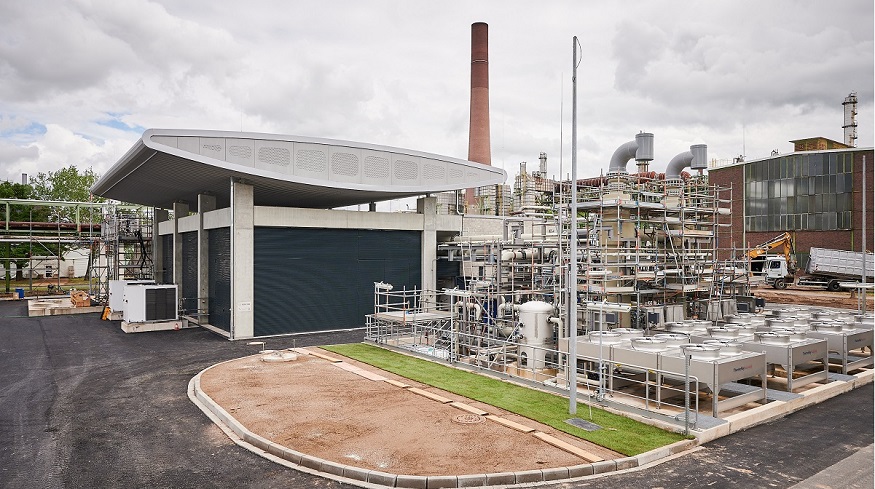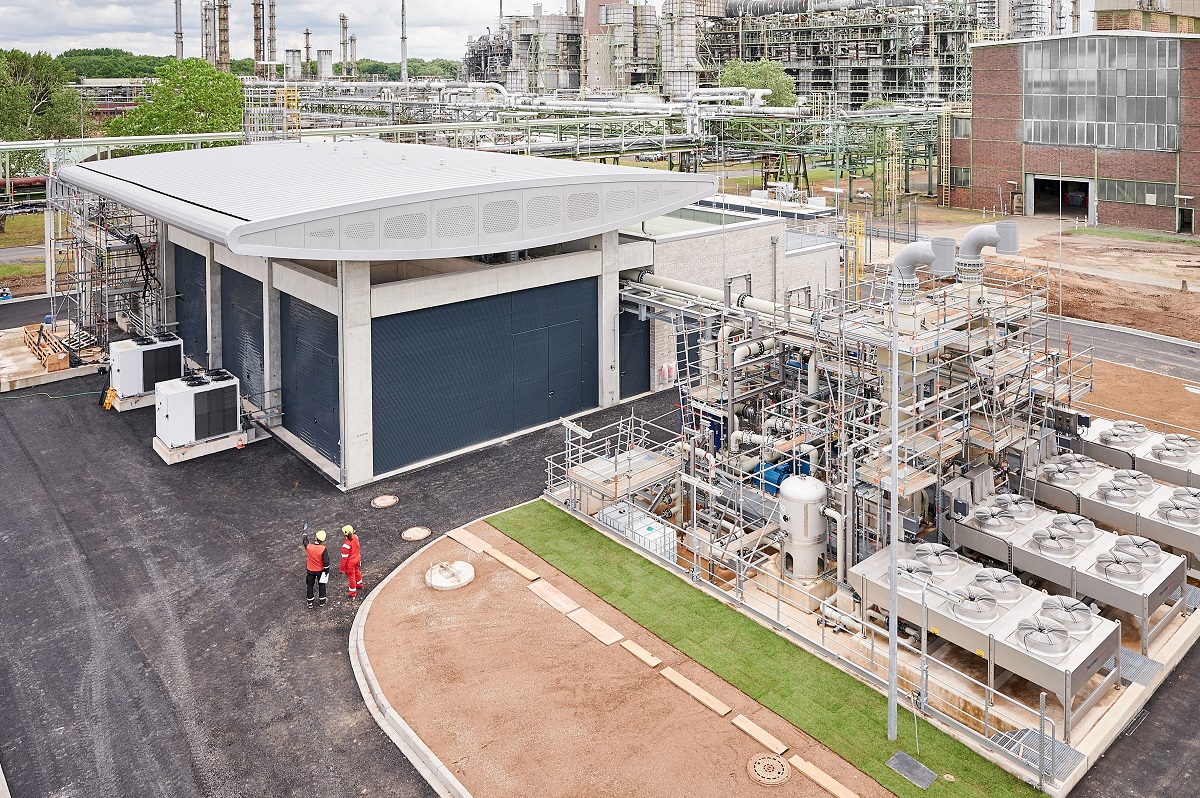
Shell opens largest green hydrogen electrolyzer in Europe
July 7, 2021The project is meant to help with the acceleration of H2 production needed for climate neutrality goals.
Shell Energy and Chemicals Park Rheinland have now started operations of the largest PEM green hydrogen electrolyzer in Europe.
The project is a part of the Refhyne European consortium and has funding from the European Commission.
The project’s European Commission funding came from the Fuel Cells and Hydrogen Joint Undertaking (FCH JU). Now that the green hydrogen electrolyzer is fully operational, it has become the first of its kind to use PEM technology at this scale within a refinery in Europe. This is only one phase of a much larger project. The intention is to expand the electrolyzer’s capacity, with plans already underway for bringing it from its current 10 megawatts to 100 megawatts.
The 100-megawatt facility will be located near Cologne at the Rheinland site. There, Shell Energy also plans to produce sustainable aviation fuel (SAF) by using biomass and renewable power. The project is also currently developing a plant for liquefied renewable natural gas (bio-LNG).
The green hydrogen electrolyzer and expanded projects are a major step in Shell’s renewable energy plans.
“This project demonstrates a new kind of energy future and a model of lower-carbon energy production that can be replicated worldwide,” said Huibert Vigeveno, the Downstream Director at Shell when he spoke at the official opening ceremony for the plant.
“Shell wants to become a leading supplier of green hydrogen for industrial and transport customers in Germany,” added Vigeveno. “We will be involved in the whole process — from power generation, using offshore wind, to hydrogen production and distribution across sectors. We want to be the partner of choice for our customers as we help them decarbonise.”
Shell has committed to a 2050 target for achieving net-zero emissions in its energy business. As a component of Shell’s Powering Progress strategy – which include the green hydrogen electroyzer – the energy giant intends to convert its refinery footprint into five central energy and chemical parks. As a result, by 2030 the company will decrease its traditional fuel production by 55 percent. The newly operational plant will be used for producing up to 1,300 tonnes of green H2 per year.



 With over 15 years of reporting hydrogen news, we are your premier source for the latest updates and insights in hydrogen and renewable energy.
With over 15 years of reporting hydrogen news, we are your premier source for the latest updates and insights in hydrogen and renewable energy.
You could have mentioned that the electrolyser was built by ITM Power in Sheffield UK although the link above “PEM technology” does take you there. Refineries and petrochemicals are going to need a huge amount of green hydrogen to replace their present source which is grey hydrogen from fossil methane by steam reforming (SMR) that releases large amounts of CO2; for every kilo of hydrogen produced this way, 9.3 kilos of CO2 are released.
Hello David,
My name is Ewan from Hull area.I`m very interested in your information about the electrolyser in question having been made in Sheffield. I am assuming you are involved with ITM Power and if so could you spare the time to communicate with me,I have some questions on the subject.If possible it would be good to have a look round your facility and we could discuss. ewanhyslop@btconnect. com
Excellent development. Hydrogen is ideal for big trucks and trains. Perhaps cross-Channel ships and Cruise Ships.
We’ll need zero emission ships to carry our trades with Australia and New Zealand and all our other destinations and customers.
Perhaps the Royal Navy can be presuaded to adopt Hydrogen for it’s frigates ?
The prime impediment to a swift, economic, effective transition to the new hydrogen/electrochemistry, renewable energy world is not in any of the active players like Shell but, instead, in those the media who, having downsized their competent science and business writers. harangue novice investors, customers, taxpayers, environmentalists and voters with unexamined, speculative memes and tropes which, through shear repetition, become the operative reality. Examples are are the H2FC vs BEV brouhaha and hydrogen color palette.
Shell seems to be edging bp in the green hydrogen race; cudos……. impressive achievement, one question (not sure if i missed it); what is powering this “GREEN” process?
Xebec Adsorption ?